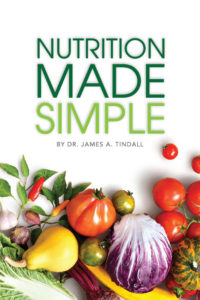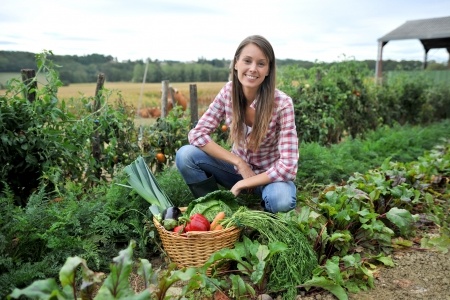There are many ways to provide a balanced diet for a person from a garden/farm, but one must take a systematic approach if they are to subsist from a large garden. One of the primary issues is the nutritional requirements. The second issue relates to workout buffs who want to build muscle – there must be adequate protein. The latter can be obtained from various legume plants and or small animals such as chickens, etc.
The best method to obtain adequate protein is to proportion the 2.5 acres, discussed in part 2 of this series, into 20% portions. These 1/5 portions would consist of 1-part beans such as pinto beans (if you were in the Western U.S. where I live), 2 parts wheat (generally winter wheat), 1 part for protein (such as soybeans), and 1 part for a garden. In all, each part is 20 percent of the whole. Given the exact amount of land, this type system works well in the west and also across the U.S. generally. And, in the Western or arid portions of the Southwest U.S. 2.5 acres will support 7 people with a balanced diet for a year using my system, which, as mentioned previously, is operating successfully in 12 countries.
Advertisement: Amazon (click on photo for more info)

The garden portion of this system would have multiple vegetable crops in it, including a cash crop such as raspberries or other berry depending on geographic location. Regardless, the crops you choose should be adapted to your geographic location. But, let’s look a little further at the crops listed above in proportions.
Wheat would be used to form a calorie base for human and animal consumption; soybeans would form the protein base for animals (can also be used for humans); and pinto beans to form the protein base for human consumption. Regarding the garden, there are many choices. For example, broccoli, chard, carrots, edible pod peas, onions, tomatoes, green peppers, and squash are sufficient to provide vitamins and minerals needed for people, as well as small animals. Raspberries, as well as potatoes could be used as cash crops.
From work I have done in Latin and South America, a ½ hectare farm (1.25 acres) represents the land holdings of about 35 percent of the worlds small farmers, while a full hectare size farm (2.5 acres) represents and additional 30 percent of the worlds small farmers. Thus, one can determine that millions of people globally live from foodstuffs that come from such small areas. The city of Shanghai produces 40 percent of its own food using this type system, but mostly from vegetables and rice.
A great many issues need to be considered, but I’ll leave you with this for now to ponder how you might grow your food and what types if you were constrained to do so from a small, fixed area of land. It can be both fun and rewarding, as well a very challenging.
Think about small farmers around the world. They exist from day to day with the labors of their own hands, much like the hunter-gatherer societies we all came from decades ago. Let me set up a scenario. In this scenario, the U.S. power grid has failed due to a solar flare, natural hazard, or other means – you choose. Due to the damages, there will be no power in most places for 6-18 months. Consequently, we are now immediately pushed back into our ancestor’s hunter-gatherer societies. Could this happen? Yes! In many areas of South America there are rolling water black outs due to resource shortage. And, if you want to know what it is really like without electricity, go home on Friday night and at 5 pm turn your electrical breaker switch off then, turn it back on at 5 pm on Sunday. What did you learn while having no electricity for 48 hours? How did you process water, cook food, and perform personal hygiene?
You should also note that if you could continuously crop your land, such as in a tropical climate, about 1,500 square feet would support one person with a balanced diet for a year, but that is another process. So, how much do you want to learn about nutrition? If there is enough interest from our readers moving forward, I will delve into the exact sizes of each of the proportions per crop of the land discussed above.







